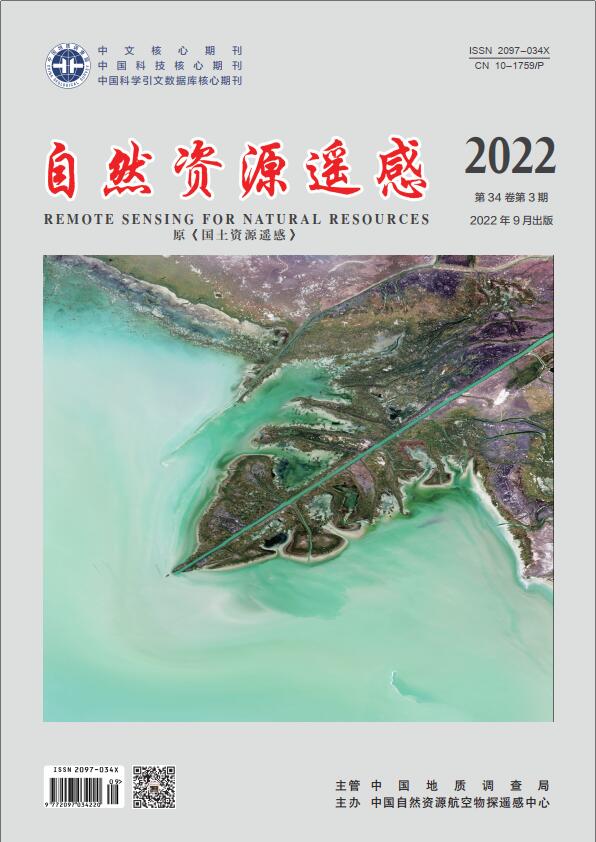| [1] |
张静, 冯东向, 綦巍, 等. 基于SBAS-InSAR技术的盘锦地区地面沉降监测[J]. 工程地质学报, 2018, 26(4):999-1007.
Google Scholar
|
| [2] |
Zhang J, Feng D X, Qi W, et al. Monitoring land subsidence in Panjin region with SBAS-InSAR method[J]. Journal of Engineering, 2018, 26(4):999-1007.
Google Scholar
|
| [3] |
汪宝存, 朱琳, 潘登, 等. 郑州市地面沉降时空演变规律研究[J]. 国土资源遥感, 2020, 32(3):143-148.doi: 10.6046/gtzyyg.2020.03.19.
Google Scholar
|
| [4] |
Wang B C, Zhu L, Pan D, et al. Research on temporal and spatial evolution law of land subsidence in Zhengzhou[J]. Remote Sensing for Land and Resources, 2020, 32(3):143-148.doi: 10.6046/gtzyyg.2020.03.19.
Google Scholar
|
| [5] |
Yang Q, Ke Y H, Zhang D Y, et al. Multi-Scale analysis of the relationship between land subsidence and buildings:A case study in an eastern Beijing urban area using the PS-InSAR technique[J]. Remote Sensing, 2018, 10(7):1006.
Google Scholar
|
| [6] |
Lyu M Y, Ke Y H, Guo L, et al. Change in regional land subsidence in Beijing after south-to-north water diversion project observed using satellite Radar interferometry[J]. GIScience and Remote Sensing, 2020, 57(1):140-156.
Google Scholar
|
| [7] |
袁悦. 基于SBAS-InSAR技术的海口地区地面沉降监测及机理分析[D]. 北京: 中国地质大学(北京), 2020.
Google Scholar
|
| [8] |
Yan Y. Ground subsidence monitoring and mechanism analysis in Haikou area based on SBAS-InSAR technology[D]. Beijing: China University of Geosciences(Beijing), 2020.
Google Scholar
|
| [9] |
聂运菊, 刘国祥, 石金峰, 等. 基于PSI技术监测上海市2009年-2010年区域地表沉降[J]. 遥感信息, 2013, 28(2):56-61.
Google Scholar
|
| [10] |
Nie Y J, Liu G X, Shi J F, et al. Ground subsidence of Shanghai from 2009 to 2010 monitored by PSI technique[J]. Remote Sensing Information, 2013, 28(2):56-61.
Google Scholar
|
| [11] |
Ferretti A, Prati C, Rocca F. Nonlinear subsidence rate estimation using permanent scatterers in differential SAR interferometry[J]. IEEE Transactions on Geoscience and Remote Sensing, 2000, 38(5):2202-2212.
Google Scholar
|
| [12] |
高二涛, 范冬林, 付波霖. 基于PS-InSAR和SBAS技术监测南京市地面沉降[J]. 大地测量与地球动力学, 2019, 39(2):158-163.
Google Scholar
|
| [13] |
Gao E T, Fan D L, Fu B L. Land subsidence monitoring of Nanjing area based on PS-InSAR and SBAS technology[J]. Geodesy and Geodynamics, 2019, 39(2):158-163.
Google Scholar
|
| [14] |
麻源源, 左小清, 麻卫峰. 基于PS-InSAR的天津地区沉降监测及分析[J]. 遥感技术与应用, 2019, 34(6):1324-1331.
Google Scholar
|
| [15] |
Ma Y Y, Zou X Q, Ma W F. Settlement monitoring and analysis of Tianjin area based on PS-InSAR[J]. Remote Sensing Technology and Application, 2019, 34(6):1324-1331.
Google Scholar
|
| [16] |
刘欣, 商安荣. PS-InSAR和SBAS-InSAR在城市地表沉降监测中的应用对比[J]. 全球定位系统, 2016, 41(2):101-105.
Google Scholar
|
| [17] |
Liu X, Shang A R. Application contrast of PS-InSAR and SBAS-InSAR in urban surface subsidence monitoring[J]. GNSS World of China, 2016, 41(2):101-105.[11] 上海市统计局. 上海统计年鉴2020[M]. 北京: 中国统计出版社, 2020.[11] Shanghai Municipal Bureau of Statistics. Shanghai statistical yearbook 2020[M]. Beijing: China Statistics Press, 2020.
Google Scholar
|
| [18] |
Cigna F, Tapete D. Present-day land subsidence rates,surface faulting hazard and risk in Mexico City with 2014—2020 Sentinel-1 IW InSAR[J]. Remote Sensing of Environment, 2021, 253:1-19.
Google Scholar
|
| [19] |
张兆旭. 基于PS-InSAR技术的高速铁路沉降监测研究[D]. 北京: 中国地质大学(北京), 2016.
Google Scholar
|
| [20] |
Zhang Z X. Research on settlement monitoring of high speed railway based on PS-InSAR technology[D]. Beijing: China University of Geosciences(Beijing), 2016.
Google Scholar
|
| [21] |
Dumka R K, SuriBabu D, Malik K, et al. PS-InSAR derived deformation study in the Kachchh,Western India[J]. Applied Computing and Geosciences, 2020, 8:1-8.
Google Scholar
|
| [22] |
熊佳诚, 聂运菊, 罗跃, 等. 利用双极化Sentinel-1数据监测城市地面沉降——以上海市为例[J]. 测绘通报, 2019(11):98-102,129.
Google Scholar
|
| [23] |
Xiong J C, Nie Y J, Luo Y, et al. Monitoring urban land subsidence by dual-polarization Sentinel-1 data:A case study of Shanghai[J]. Bulletin of Surveying and Mapping, 2019(11):98-102,129.
Google Scholar
|
| [24] |
史玉金. 上海地区地面沉降新特征及对重大市政设施影响研究[D]. 上海: 上海交通大学, 2018.
Google Scholar
|
| [25] |
Shi Y J. Recent characteristics of land subsidence in Shanghai and its effect on performance of key municipal facilities[D]. Shanghai: Shanghai Jiao Tong University, 2018.
Google Scholar
|
| [26] |
朱菊艳. 沧州地区地面沉降成因机理及沉降量预测研究[D]. 北京: 中国地质大学(北京), 2014.
Google Scholar
|
| [27] |
Zhu J Y. Research on land subsidence mechanism and prediction of settlement in Cangzhou area[D]. Beijing: China University of Geosciences(Beijing), 2014.
Google Scholar
|






 DownLoad:
DownLoad: